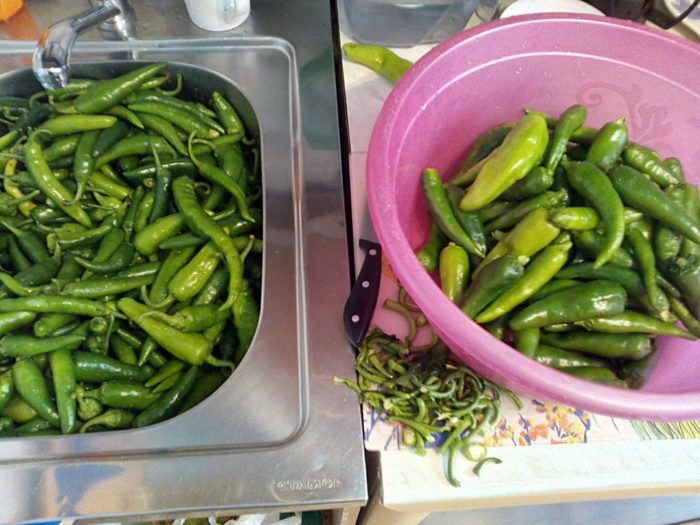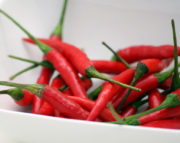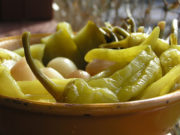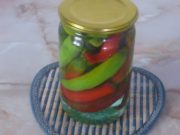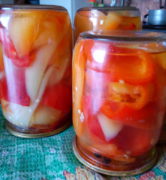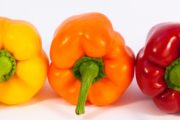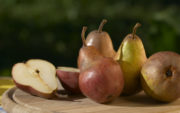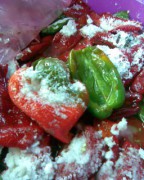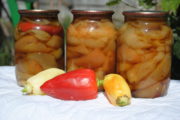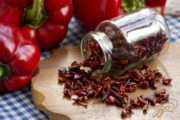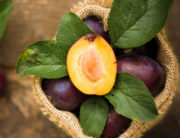Fire reserves: what can be prepared from hot peppers for the winter
Hot peppers are well known to housewives. Add a little more than necessary, and the food becomes impossibly spicy. However, this pepper has many fans, because dishes with hot seasoning are not only aromatic and tasty, but also have medicinal properties. Therefore, more and more people are interested in what ways can you prepare hot peppers to diversify your home cooking in winter?
Content
Five beneficial properties of hot pepper
The American Indians were the first to grow capsicums, and they came to the countries of Europe and Asia relatively recently - in the 16th-17th centuries. But these days it’s even difficult to imagine Indian, Korean or Chinese dishes without a characteristic fiery taste. The unique properties of hot pepper are gradually gaining more and more fans around the world. Why is this happening?
- Hot peppers contain many vitamins beneficial to the body - C, group B and carotenoids. Interestingly, lemon contains half as much vitamin C as raw hot pepper pods. In addition, peppers contain fatty oils and sugars.
- The spiciness of pepper directly depends on the alkaloid capsaicin included in its composition, and this substance can relieve pain and reduce inflammation.
- Thanks to hot pepper, the body produces endorphins - hormones of happiness, joy and pleasure. They reduce stress and help cope with insomnia.
- For many years it was believed that eating spicy foods was harmful. Recent research by scientists suggests exactly the opposite. Hot pepper improves appetite and, if consumed in small quantities, qualitatively normalizes digestion.
- Eating hot peppers is especially useful in old age. It improves metabolism and blood circulation, normalizes blood pressure, and also prevents the development of atherosclerosis and reduces the risk of blood clots.
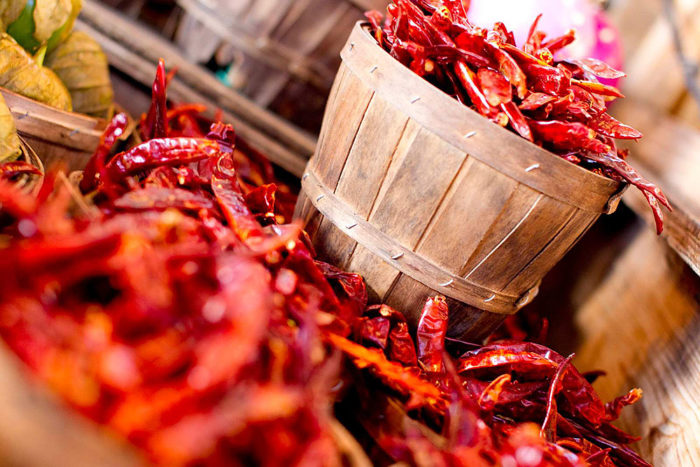
Types of hot pepper and safety during its processing
There are only four cultivated types of hot pepper: Peruvian, Mexican, Colombian and pubescent. Over the years, by crossing them, people have grown a great variety of varieties that differ in pungency, taste, size, pod shape and color. Some peppers taste almost not spicy, and some varieties seem to burn with fire.
The main thing that all peppers have in common is that they have a sharp, hot, slightly bitter taste. Therefore, in cooking they try to use them in small quantities, as a seasoning for salads, first and second courses, and less often for baked goods and drinks.
Care should be taken when processing hot peppers. Burning substances that get on mucous membranes or micro-wounds on the hands can cause pain and a strong burning sensation. Therefore, when preparing pepper, the room should be well ventilated. It is advisable to wear gloves on your hands.In addition, you should try not to touch your face with your hands, much less your eyes. If pepper does get into your eyes, they should be rinsed with plenty of water.
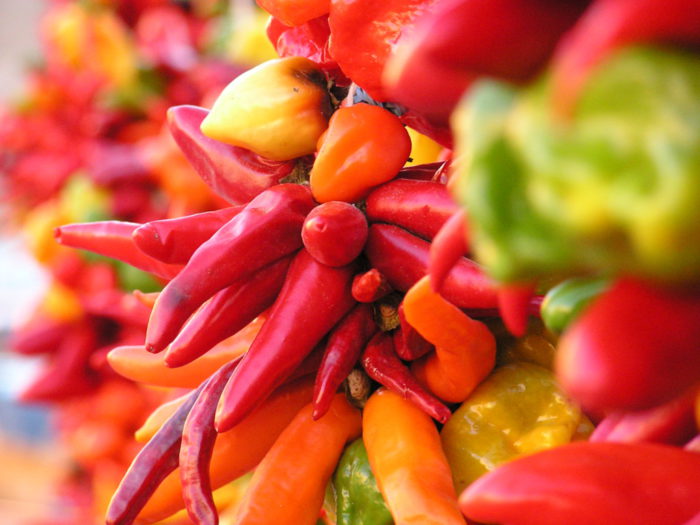
Methods for drying hot peppers
It is very convenient to store dried hot peppers, and there are several ways to dry them. In this case, you can dry both whole pods and halves of peppers with the seeds already removed.
The easiest way is to hang the pods on ropes or strong, harsh threads. You just need to choose a well-ventilated room, a country terrace, a shed, an attic or a loggia, where it is dry and warm. It is also advisable that the pepper should not be exposed to direct sunlight. It is convenient to string the pods through the stalks. It is necessary to ensure that they do not touch each other, and air can blow on them from all sides.
It is also convenient to place the peppers on paper-lined trays, small racks and large dishes anywhere, for example, on a wide windowsill. The main thing is not to forget to stir the pepper “raw materials” from time to time.
To speed up the drying process, the pods are placed in a stove oven or electric dryer. With this method, it is important to choose the optimal drying mode so that the pepper dries and does not bake. It is good to set the temperature in the oven to +50°C and open the door slightly. In an electric dryer, peppers of the desired condition can be obtained in about 12 hours.
Store dried pods whole or ground. To grind them, you usually use a food processor, coffee grinder or mortar and pestle. Dried pepper does not like moisture, so it must be stored in hermetically sealed containers: glass jars, wooden boxes, birch bark containers or paper bags. Many people leave a string with pods in a visible place - to decorate the kitchen.
Find out about how to dry hot peppers at home, available on our website Make it delicious!.
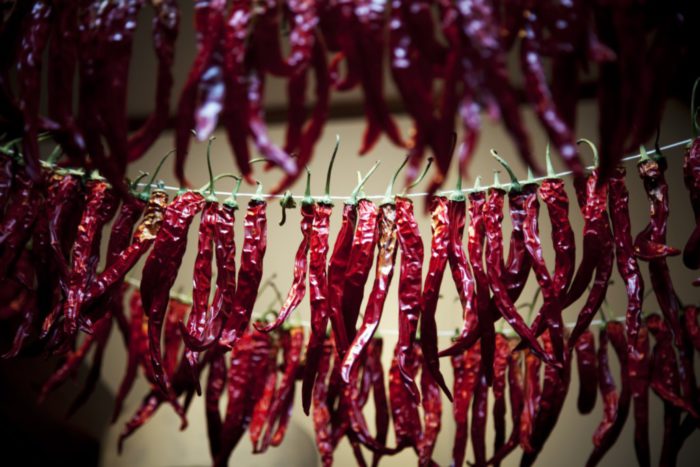
Pickling
The people of the Caucasus have a saying: “Nothing warms you up on cold days like a good spicy snack.” Pickling peppers is not difficult. For 1 kg of capsicum you will need: a large bunch of dill, cilantro and mint, 3 heads of garlic and 300 ml of grape vinegar. The best option for pickling is vinegar, which is made from white grapes. In addition, black and allspice peas, bay leaves, cloves, coriander, salt and sugar are used for pickling.
Fully ripened peppers taste very good. Ideally, picked straight from the bush just before pickling. Only leaves are used from the greens; twigs are not needed for pickling. There is no need to chop the greens. The garlic just needs to be disassembled into slices without peeling it. Then, in combination with pepper, it will serve as an excellent savory snack.
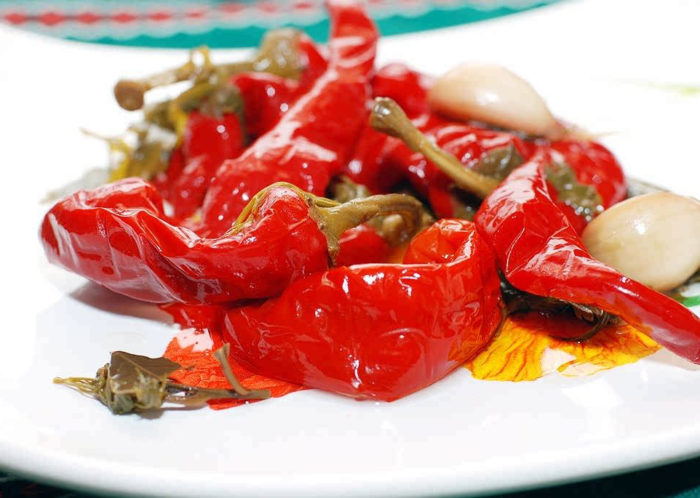
The pods are washed and pierced at the stalk with a toothpick or knife so that there is no air inside the peppers. The next task is to slightly soften the pods. To do this, they are placed in a pan of water, boiling water is poured into it and kept under a closed lid for 3-4 minutes. Then the water is drained. This must be done at least three times. This method will allow the peppers to become softer, but not lose their shape. The same result can be achieved if the pods are blanched in boiling water for 2-3 minutes, and then turn off the heat and leave them in the pan, covered, for another quarter of an hour.
Pickling jars are sterilized in advance. For 1 kg of peppers you will need 3 jars of 0.8 liters each or 5 jars of 0.5 liters each.
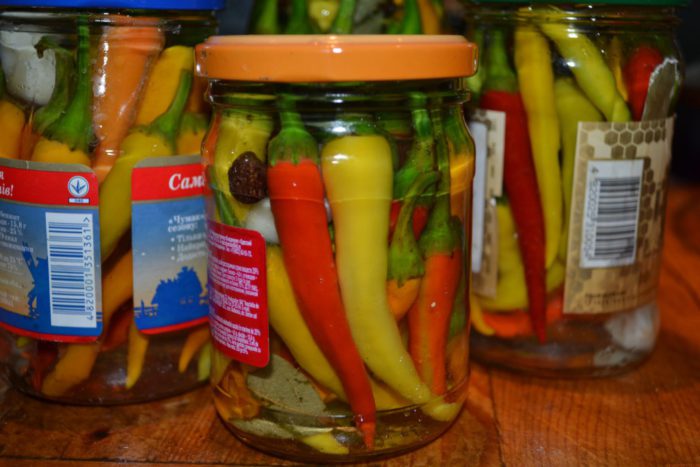
After all the preparation, you can start preparing the marinade. Add 6 tsp to 1.5 liters of water.granulated sugar, add salt to the water to taste, add all the green leaves, cloves of garlic, 6-8 bay leaves, 15 black peas and 5-6 allspice peas, 1 tbsp. l. coriander seeds and 4-6 cloves. The marinade is boiled and grape vinegar is poured into it. Then the marinade should boil for a couple more minutes.
Green leaves along with garlic are placed at the bottom of glass jars. Peppers are placed on top of them and the contents are filled with hot marinade with spices to the very top. After this, the jars are sealed. They can be stored at room temperature.
In the video, Olga Papsueva talks about the secrets of pickling hot peppers at home.
Pickling
Pickling is an excellent way to prepare for the winter, because it allows you to preserve maximum beneficial vitamins and minerals in vegetables. Hot peppers can be pickled in different ways.
If the house has the opportunity to store food in a cool place, for example, in a cellar, hot pepper pods can be pickled without rolling them into jars. The peppers are pre-baked in the oven until they become soft and allowed to cool. Then the pods are placed in pre-sterilized dry jars, placing peeled garlic cloves, dill sprigs, horseradish and black currant leaves between the layers of pepper.
To prepare the brine, 60 g of salt (not iodized!) and 80 kg of vinegar are diluted in 1 liter of water. Water is boiled, allowed to cool and poured into jars with pepper. Under pressure, the pickles are left at room temperature for three weeks, and then taken out into the cold.
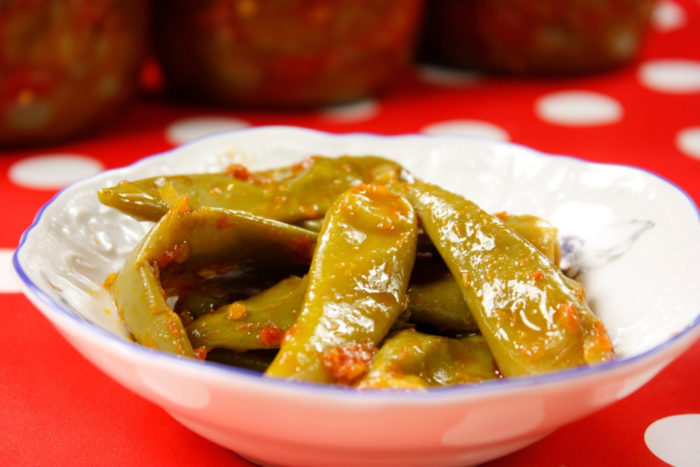
If there is no cellar or cool veranda in the house, the jars are filled with hot brine, a little vinegar is added and sterilized: 0.5 liters for 20-25 minutes, and 1 liter for 35-45 minutes. After this, the jars are closed with lids. They can be stored at room temperature.
In the video, Maxim Punchenko shows how to prepare tsitsak - hot salted pepper in Armenian style.
Pepper paste
Hot pepper pastes are used in the cuisines of almost all Asian countries and many Mediterranean countries. They are added to ready-made dishes, as well as when cooking soups and while stewing meat and fish. For aromatic hot paste you need only five ingredients: 100 g hot pepper, 1 kg bell pepper, 5 heads of fresh garlic, 2 tbsp. l. salt and 5 tbsp. l. vegetable oil. To add different flavors while preparing the pasta, you can add cilantro, celery or mint.
Both types of peppers are washed and seeded. Garlic is also peeled. Then grind the peppers and garlic in a blender or food processor until smooth. The resulting puree is placed in cheesecloth and hung so that the juice drains. Under no circumstances should it be thrown away! The juice from the peppers can be frozen in small serving containers, such as ice cubes, and used as a seasoning during the winter months.
The drained puree is transferred to a baking sheet, salt and butter are added to it and mixed thoroughly. In an oven preheated to +150°C, the pepper paste is cooked for about an hour. Store it in small plastic containers in the freezer. It is recommended to store the opened paste in the refrigerator and use it within 10 days.
Learn how to make it at home raw Abkhazian adjika made from hot peppers, available on our website Make it delicious!.
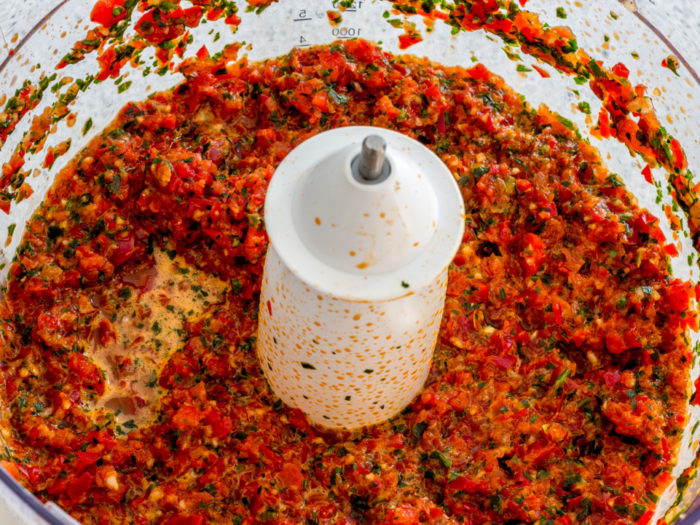
Canning hot peppers without salt
Hot pepper itself is an excellent antimicrobial agent. That is why it is consumed in large quantities in southern countries. Due to their antimicrobial properties, pepper preparations can be made with unusual preservatives.
To preserve hot peppers without salt and vinegar, you first need to wash, dry and pierce them with a toothpick. The whole pods are then filled into sterile jars and extra virgin olive oil is poured over the top. If desired, you can add some herbs to the pepper. The jars are covered with lids and stored in a dark place. With this type of preservation, olive oil will acquire a bright peppery aroma and become spicy in taste. Therefore, it can be used in winter as a salad dressing.
In another way, hot peppers are preserved using natural apple cider vinegar. The preparation of pods and jars is the same as for oil preservation, only the pepper is filled with vinegar rather than oil. As in the first case, if desired, you can add herbs to it - mint, rosemary or oregano, as well as honey - 2 tbsp. l. for a 1 liter jar. The pepper will be ready to eat in a month. Aromatic and spicy vinegar, like oil, is perfect for dressing fresh salads.
